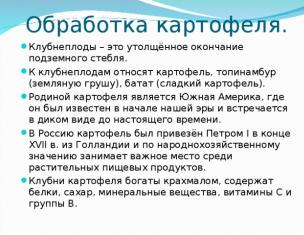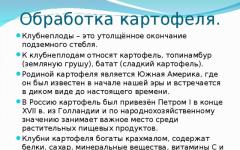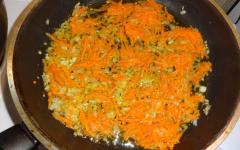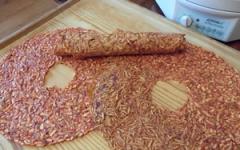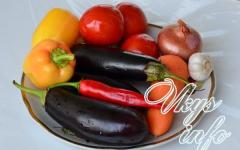“Types, mechanical culinary processing and slicing of tuber crops Electronic textbook for educational purposes Developer: ...”
State budgetary educational institution
secondary vocational education
"Berezovsky Polytechnic College"
Types, mechanical culinary
processing and slicing of tubers
Electronic manual
educational purpose
Developer: Enbrecht G.V.,
production master
training, teacher
special disciplines
Berezovsky 2012
Click the appropriate button to go to the desired section
Types of tubers
MKO technological process
Potato
Sweet potato Jerusalem artichoke Simple cutting forms Figured cutting of potatoes Test questions
TYPES OF TUBERS
A tuber is the thickened end of underground stemsPotato,
Jerusalem artichoke (earthen pear),
Sweet potato (sweet potato) Return to Contents
Technological process of MCO of vegetables
Sorting and sizing,
Cleaning
Washing
Slicing Sorting and sizing contribute to the rational use of vegetables for preparing certain dishes and reduces waste during mechanical processing.
Sorting - removal of foreign impurities, rotten and broken specimens, selection according to culinary use.
Calibration - distribution of vegetables by size Washing
Vegetables are washed in vegetable washing machines or by hand to remove residual soil and sand from their surface.
Washing also improves the sanitary condition of machines and helps to increase their service life.
Vegetables are peeled in vegetable peeling machines (mechanical method) or manually (manual method) in order to remove parts with reduced nutritional value.
With the mechanical cleaning method, a further cleaning process is still necessary (removing eyes and poorly cleaned areas).
The glycoside solanine, contained in greened and sprouted tubers, is partially removed when peeling potatoes, and when boiled it turns into a decoction. In spring, sprouted potatoes should not be boiled in their skins and decoctions of peeled potatoes should be used.
Vegetable Peeling Tools and Equipment Potato Peeler Potato Peeler and Eye Remover Slicing Machine
Slicing vegetables (if necessary) promotes more uniform cooking, gives dishes a beautiful appearance, and improves taste.
Vegetables are cut mechanically or manually.
Slicing tools Return to "Contents"
Potatoes are the second bread. The main component is starch (on average 18%).
Contains sugars (1.5%), proteins (2%), minerals (Na, Ca, F, Fe), fiber (2%), vitamin C. High-calorie.
It is used to prepare a huge range of dishes, and also serves as a raw material for the production of starch, and is used for fattening livestock.
Potato varieties
Table pulp (12-18% starch) – white pulp, good taste, boils well, but does not crumble. Tubers are well preserved.
Technical (25% starch) - used to obtain starch.
Feed – high yield and high content of starch and proteins.
Universal - have the properties of table and technical varieties.
– – –
Raw potatoes cut into thin slices
Stacked one on top of the other
Shredded to length 4-5 cm, cross-section 2x2 mm Used for deep-frying Cut into cubes (3-4 cm, cross-section 7-10 mm)
– – –
Used for stews, braised beef, deep-frying, making pickles, vegetable and potato soups. Slicing into slices
Boiled or raw potatoes are trimmed (cylinder)
Cut crosswise to a thickness of 1.5 - 2 mm.
Use:
raw – for frying, boiled – for baked dishes, for frying Slicing
Small to medium-sized boiled potatoes, cut in half lengthwise
Then again in half in the opposite direction
Then across thickness 1
Large tubers - first into cubes, then across into slices Used for salads and vinaigrettes You can fry slices from raw Return to “Contents”
or boiled potatoes Figured cutting of potatoes
2. Kegs
3. Chips, spirals
4. Garlic
Barrels: medium-sized potatoes are cut from two opposite sides, ground, giving the shape of a barrel. Use boiled for garnish
Pears: Medium-sized potatoes are shaped into pears. Use boiled for garnish
Garlic: raw potatoes are peeled into barrels, then cut into slices and a small notch is made along the edge.
Used for soups
Balls: using notches. Large - for deep-frying, medium - for deep-frying and as a side dish for cold dishes
Chips: first cylinder high. 2-3 cm, then a ribbon of thickness 2-2.5 mm, length 25-30 cm is cut along the circumference, giving the shape of a bow.
Deep fried
Spiral, spring:
special tool.
For deep frying Return to “Contents”
Control questions
1. List the tubers
2. Nutritional value of tubers
3. Scheme of primary processing of tuber crops
4. Cleaning methods
5. Cutting methods
6. Simple cutting shapes
7. Curly cutting forms Return to “Contents”
Similar works:
“214 APPLIED MECHANICS AND TECHNICAL PHYSICS. 2009. T. 50, N3 UDC 621.9.047; 532.528 ABOUT ONE PROBLEM OF THE THEORY OF DIMENSIONAL ELECTROCHEMICAL PROCESSING OF METALS N. M. Minazetdinov Kama State Academy of Engineering and Economics, 423810 Naberezhnye Chelny E-mail: [email protected] A method is proposed for determining the shape of the anode-workpiece boundary for a given shape of the cathode-tool in plane problems of the theory of dimensional electrochemical processing of metals. Within the accepted assumptions, the anode-component boundary...”
"V. A. VENIKOV TRANSIENT ELECTROMECHANICAL PROCESSES IN ELECTRICAL SYSTEMS S, A. VENIKOV TRANSIENT ELECTROMECHANICAL PROCESSES IN ELECTRICAL SYSTEMS FOURTH EDITION REVISED AND ADDED APPROVED BY THE MINISTRY OF HIGHER AND SECONDARY SPECIAL EDUCATION OF THE USSR AS A TEXTBOOK FOR ELECTRIC POWER STUDENTS CZECH SPECIALTIES OF UNIVERSITIES MOSCOW. HIGH SCHOOL" BBK 31.27 V 29 UDC 621.3U For the third edition of the textbook “Transient electromechanical processes in electrical systems...”
“Harry ABRAMYAN PROBLEMS OF MECHANICS OF THE SOLAR SYSTEM Monograph Nizhny Novgorod Publisher Abrahamyan D.G. UDC 521: 523: 530 BBK 22.632 A1 Abrahamyan G.L. Problems of mechanics of the Solar system: monograph / G.L.Abramyan. Nizhny Novgorod: Publisher: Dmitry Garrievich Abrahamyan, 2007. 129 p. ISBN 978-5-9901201-1-2 The monograph of the candidate of physical and mathematical sciences G.L. Abrahamyan describes previously unknown properties of the movement and spatial distribution of planets and their satellites. The book is addressed to specialists and...”
“Criteria for the equality of natural frequencies of oscillations of sensitive elements of micromechanical gyroscopes-accelerometers I.E. Lysenko, O.A. Ezhova Development of angular velocity sensors (gyroscopes) and linear acceleration sensors (accelerometers) is, today, one of the priority areas for the development of microsystem technology in the world)




